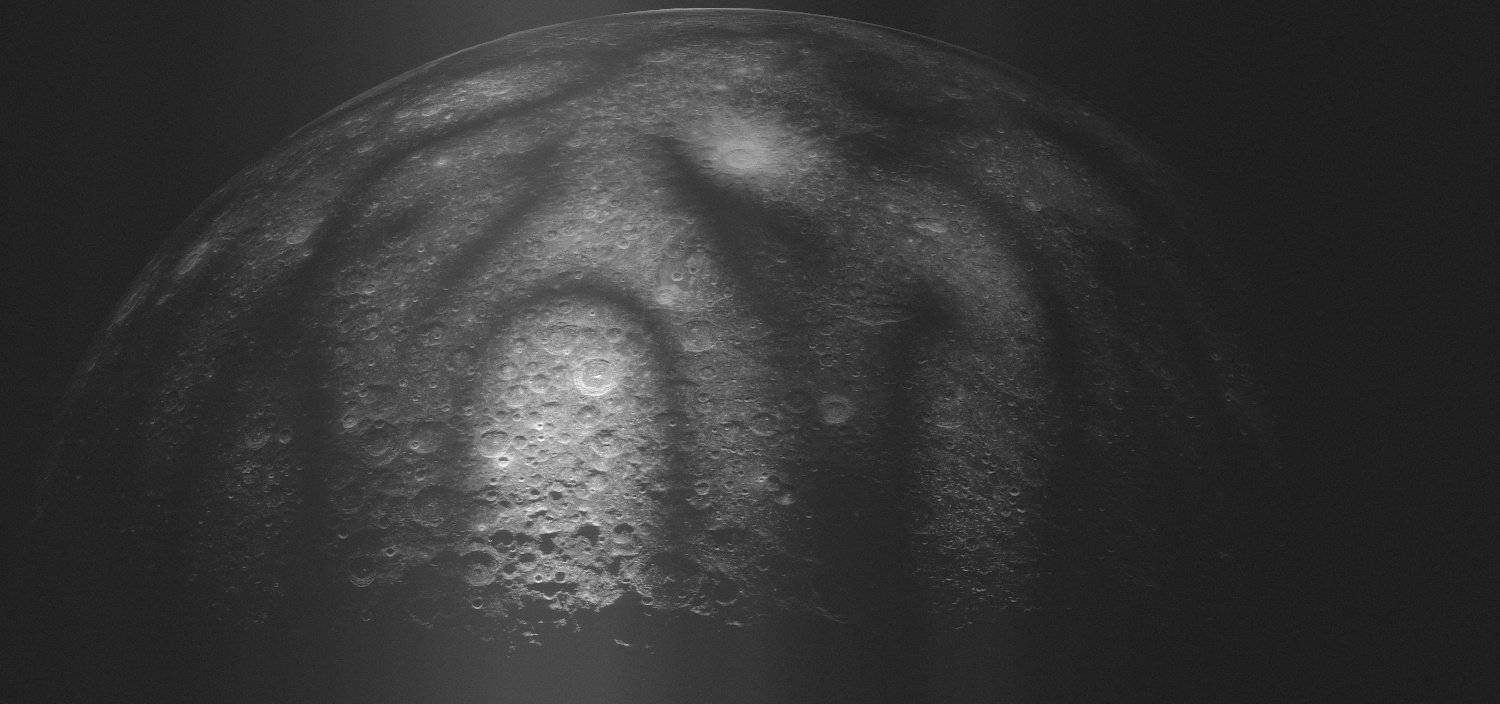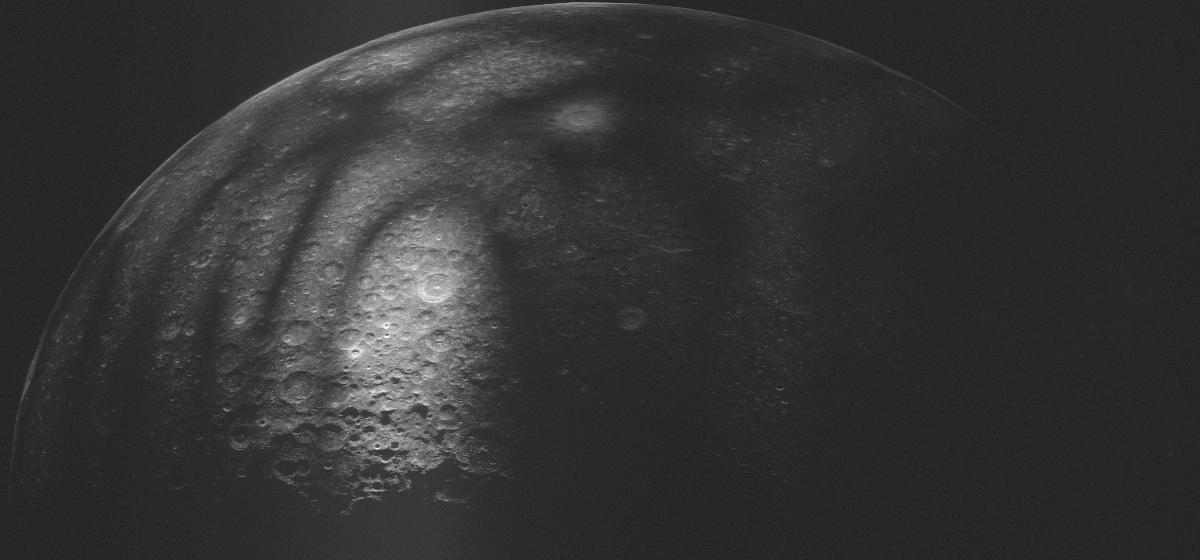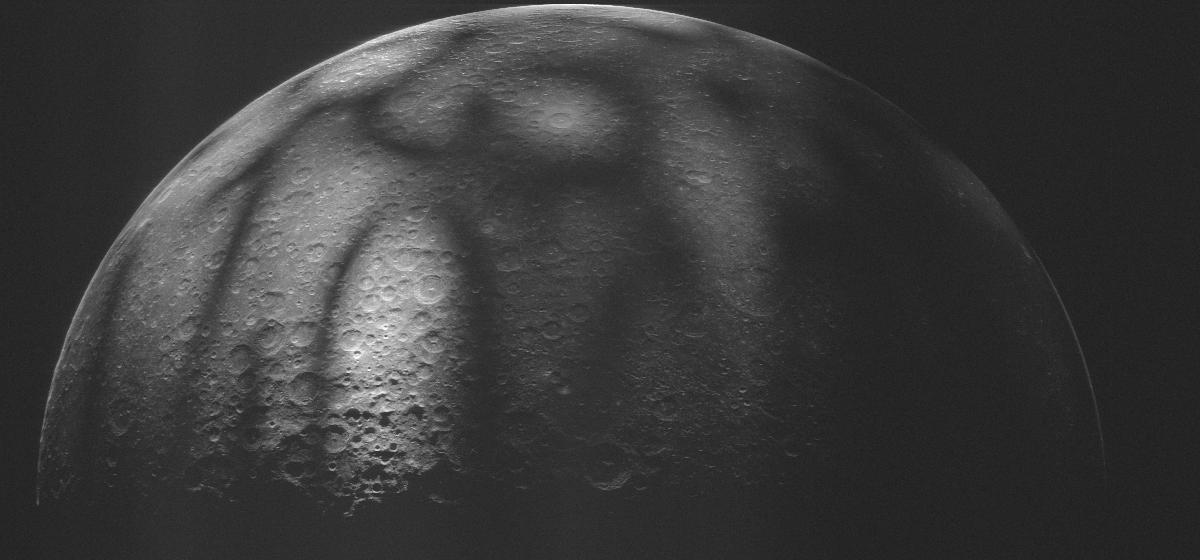2000-11-19 10:48:00
LCP
27 seconds of data, shown at 2.8 km resolution

These observations were performed in order to test whether unusual signatures from small regions near the south pole are due to scattering from very rough surfaces or due to volume scattering from an ice-bearing medium. Coherent backscatter effects that are usually invoked to explain ice-related scattering are predicted to vanish with a bistatic angle of order 1 degree.
The transmitted signal was encoded with a waveform that provides a range resolution of 30 meters. The received echoes were recorded to computer disk at a 10 MHz rate. These data are expected to yield the highest resolution images of the lunar south pole ever obtained.
The images below are very preliminary reductions of a small amount of data. They show that data were successfully recorded at both receiving sites in both senses of circular polarization. They also show the beam pattern of the Arecibo telescope painted on the surface of the Moon. The main lobe and first null are clearly visible around the south polar region. Echoes from the rest of the Moon appear through the sidelobes of the beam pattern.
The final image shows the south pole craters Shackleton (20 km) and de Gerlache (32 km) at moderate resolution, providing very encouraging prospects for the processing at full resolution.
Arecibo to St-Croix VLBA 25 m antenna
2000-11-19 10:48:00
LCP
27 seconds of data, shown at 2.8 km resolution

Arecibo to Goldstone DSS-24 34 m antenna
2000-11-21 12:55:00
LCP
27 seconds of data, shown at 3.5 km resolution

Arecibo to Goldstone DSS-24 34 m antenna
2000-11-21 12:17:00
RCP
27 seconds of data, shown at 3.5 km resolution

Close up view of Shackleton and de Gerlache craters
12 minutes of data, shown at 120 m resolution
